“Captain, we will have a VDR Analysis as you cross the Torres Straits.
Please inform your Bridge team.”
A familiar email that you would expect on a Monday morning.

VDR Analysis in the Present-day
As the VDR Analysis and Remote Navigation Audits become commonplace, I decided to compile this list of the most common observations we have seen on the audits and inspections we have done over the last few years.
No Seafarer likes to be pointed out their mistakes, especially after the rigorous training program and examination process that make us what we are. Most of us take pride in getting a clean slate after an audit, oil major or any inspection even if it is of minimal consequence.
The industry standards and requirements keep us on our toes and we as seafarers have all come to a point where we hate the words:
“AUDIT”… “SURVEY”….. “INSPECTION”….
or whatever you want to name it!!
The onset of the COVID-19 pandemic was somehow a blessing in disguise where all of us were spared from the barrage of inspectors and surveyors visiting the vessel. We could get some breathing space and do our work peacefully.
However, statistics prove that if the audit and inspection program is taken seriously and in the right spirit it surely leads to fewer detentions and incidents or accidents and in the process boosts the confidence of the vessel’s team.
After having carried out VDR Analysis and Remote Navigation Audits on more than 50 vessels I realized that all of us know what is to be done to safely navigate a vessel. All we need to get that clean slate with ZERO findings is to apply ourselves with a little re-wiring and actually work as a team on the bridge instead of only carrying out the Bridge team meeting.
Please remember if we don’t believe that we are a team then that so-called BTM or BRM meeting is only hogwash.
The most common observations from VDR Analysis
Without further ado, let’ jump into our list of the top five most common observations during VDR Analysis and Remote Navigation Audits.
1. USING AIS DATA ON THE RADARS FOR COLLISION AVOIDANCE
Where are you getting the CPA & TCPA data from?? Is it the AIS?
It is what today’s generation of navigators are counting on – to base their action on. How could you be sure of its accuracy??
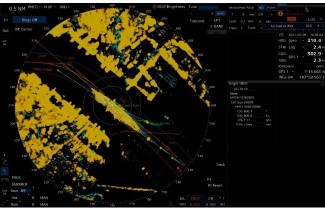
The CPA and TCPA and other parameters of the targets are calculated based on the Position, Course and Speed of the targets. When the AIS data is selected for the targets (Radar Target) the above parameters are reflected from AIS, or in other words, the GPS. This is not as accurate as the target positions received from the scanner of own vessel‘s radar.
Remember, the CPA& TCPA in the AIS is calculated based on GPS position!
However, when the ARPA calculates the CPA & TCPA it is based on position and bearings picked up by own vessel radar scanner and are more accurate than the AIS or GPS position.
In congested waters like Singapore Straits, it is prudent to use Radar or ARPA data for collision avoidance.
It is common to pass targets as close as 0.1/0.2NM when in congested waters. If this CPA is based on AIS data, which might not be accurate then we are already in a soup and asking for big trouble.
CPA is based on AIS data, which might not be accurate then we are already in a soup and asking for big trouble.
2. MASTER PILOT INFORMATION EXCHANGE
8 out of 10 times the Master’s exchange of information starts and stops at mentioning the vessel’s draft and Engine status when the pilot boards, after which he hands over the pilot card and that in his view completes the Master Pilot Information exchange.
Based on the above information exchange, I would never give the keys to my BMW costing millions to a driver whom I met for the first time to drive in his locality speaking his local language even if I would be sitting in the back seat.
Like every car or bike has its own peculiarities, so does every vessel.
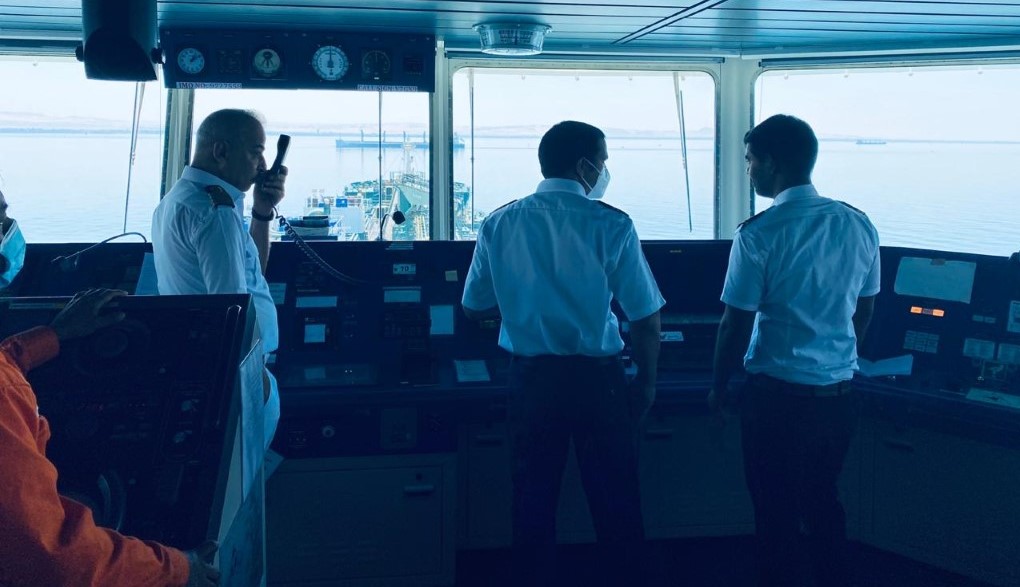
What’s more, every vessel behaves differently as per the conditions of her draft, depth available and local weather. Therefore it would not be wrong to state that every Master Pilot Information exchange must have something new to share.
The most common exchange, if any, is that the Master stating to the pilot that the bow will swing to starboard with engines running astern (for a Right Handed fix pitch propeller).
Tell me, which pilot in the world does not know that…?
The information that the pilot probably would have liked was whether the bow turns violently to starboard or it takes its time to do so depending on the loaded condition. This particular titbit can only be provided by the Master to the pilot and it will most certainly assist in the berthing operations.
There are innumerable such valuable and critical trivia that the Master subconsciously possesses but fails to share which can be vital for maneuvering. The Pilot card and other checklists is only a guide, the Master needs to take the final call on which information will be apt for which situation.
3. PICKING UP PILOT
The VHF is blaring – Vessel is being raised by the Pilot Boat – The helmsman is on the wheel – Master is on the Bridge wing trying to give a Lee to the pilot boat – Where is the Officer on watch?? Not on the bridge!!
Oh!! He has been sent to the pilot ladder to escort the pilot to the bridge! Familiar scenes???
Very common on the transcripts of my VDR analysis!! So what went wrong?
All Bridge procedures were followed till that moment. Bridge watch level was maintained and the Master in control of the navigation procedures.
The whole operation of the Officer on watch going down and escorting the pilot back to the Bridge takes less than 10 minutes and so the Master decides to take the risk – to give another D/Off some well-deserved rest.
As long as nothing happens no one questions, but what if those 10 minutes are the worst ten minutes of your life and everything bad happens during that period!!??
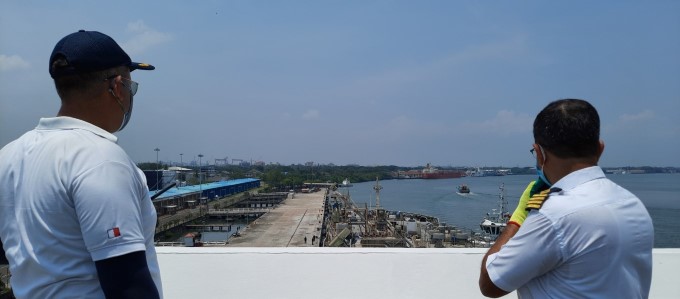
We need to remember that the Ship is only a machine and anything can go wrong with an electronic or mechanical system. That’s the reason we have procedures in place and the same need to be followed.
The Bridge watch level cannot be compromised while receiving or dropping off pilots.
If an extra officer is required as per the Company Policy then the manning has to be so arranged and maintained. It should be considered even if your Navigation policy says differently. While you follow your company policies, it is also about your own experience and common sense.
4. HESITATION TO USE ENGINES
Something in the subconscious mind of most navigators prevents them from using the Main Engines, even when the vessel is on maneuvering speed.
Let’s take an example.
I am sure all of you, some time or other have experienced transiting a channel or strait having entered and exited with the same vessel.
In my experience in carrying out VDR analysis, I have noted that more often than not a vessel is in close proximity to you following the same track or route. She is doing a similar speed and the whole passage is transited with the other vessel at less than 0.5NM for a period longer than 2 to 3 Hrs.
Although the Master might be on the bridge (at times) and the target vessel is monitored, being less than 0.5NM to a vessel is asking for trouble especially when the M/E are on maneuvering speed.
In such cases, speed can be adjusted to clear the other vessel and let her pass.
Also, it must be borne in mind that when a vessel is close to the beam or quarters, it restricts your actions which you might require to take to avoid close quarter with other traffic causing concern.
Use the Engines as required to avoid such situations.
5. HANDING & TAKING OVER OF CONN
Here is something interesting I found in most VDR Analysis recordings.
It is always very categorically mentioned in the logbooks but when I tune my ears to the time the con has been handed over from the duty officer to the Master or vice versa there is absolute silence.
In my experience, 90% of the times the con changeover is only a written procedure. The actual handing over of the situation along with the traffic, local conditions, and equipment status is never exchanged between them.
More often than not within 5 minutes of the Master arriving on the Bridge he starts ordering the course alterations and managing the traffic, leaving the Officer on watch with little choice than to mention the coveted lines:
‘MASTER TOOK OVER CON AT….’
Sadly it is the same case when the Master hands over the reins to the Officer on watch when he is about to head for rest and leaves the Bridge.
“ARE YOU COMFORTABLE?”
Whatever that means… which Officer is going to say NO to that??!
The Master is supposed to hand over properly and make the Officer on watch comfortable. this seldom is the case.
Conclusion
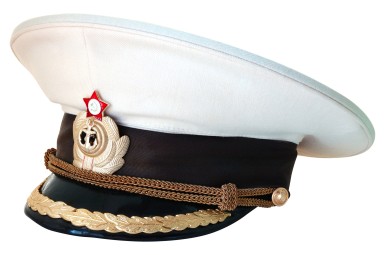
The data from our VDR Analysis reports bring out something interesting.
If you observe closely, 4 out of the above 5 points are related to human nature and psychology of the Bridge team. They say that the team is as good as the Master. Being a Master for more than 10 years I am a firm believer of this.
The Master runs the show and the team acts and reacts on the Master’s tune. The idea is to get the vessel safely from one port to another with all the assistance you can get. The confidence and willingness of the Officers is a reflection of the Master’s openness and the respect he commands.
PRACTICE WHAT YOU PREACH!!
If you want the officer on watch to hand over watch properly, you as a Master have to do it first.
If you want to give the officer on watch the freedom and confidence to use the Main Engines, then the Master needs to use it and explain the advantages and benefits to the junior officers.
MASTER NEEDS TO LEAD FROM THE FRONT – PERIOD!

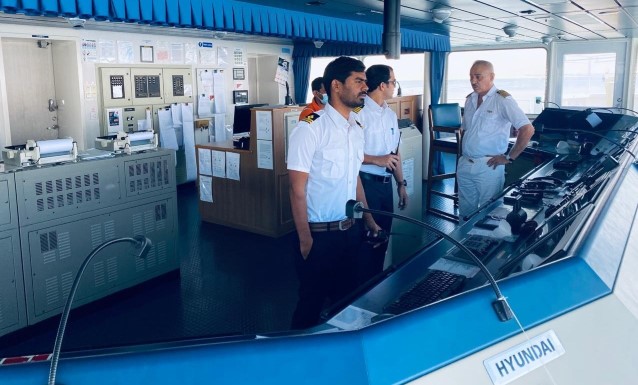

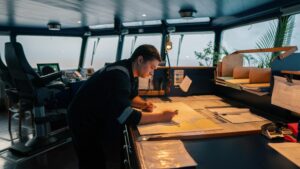



13 thoughts on “Top 5 observations we found from more than 50 VDR Analysis reports”
Very well written and informative blog highlighting the concerns correctly. These should be taken in correct spirit to bring about a behavioural change in our safety culture.
Hope to see a similar blog on “Navigation in the Mediterranean sea with erratic GPS coverage.”
Thanks Ryan. GPS signal in Medi… would make an interesting write up
This is a very good analysis of things that we take for granted.
Thank you Sir for your feedback
Dear Sir,
Nicely penned.
Duly agree with most point. And specially to the point that OOW is sent for receiving Pilot. With restrictions in Running cost and manning vessel an extra officer is not always present. Thus this near miss is a perpetual.
How to come out off this is rarely briefed.
Off late we are practising raise of Watch level prior pilot picking up.Guess all of us should do the same, not for the sake of investigation but for inculcating Safe minded practise.
Picking up Pilot should also include Stopping of Engine when boat alongside as safe and practical as a safe measure.
Discussion with pilot should include Bollard strength and discussing the speed at which tugs should come alongside.
To prevent girding.
Apart Speed at which you approach berth.
For Example 1Mile -6 Knot
Half Mile -3 Knot
And lateral Berthing speed.
I feel this is also an imp aspect to discuss.
Most Bridge team feels presence of Pilot relieves them from there responsibility.
Presence of ECDIS has made us complacent in doing the basic position plotting during pilotage.
Recently, Masters are signing a petition and fwding to terminals for making sure gantry cranes folded prior coming alongside.This is something good and preventive measure amidst so many lapses.
The above are most commonly observed as and when self carry out Nav audits soon after taking over from the former.
Rest you blog is truly a refresher. And will help in reducing Navigational near misses.
Or rather as Henrisch Law states 3000 Near misses cause One major accident!!!
Best Regards
Sounak
Well written Sounak… will try to write something based on your observations
the very unfortunate thing is that inspite of properly trained,we learnt from the accidents and incidents.
Yes..
Happy seafarers day..
Watch keeping at sea has problems as Young officers are playing with smart phone all the time. No proper look out is maintained on the navigation bridge, causing collisions at sea..
I opened the link in order to learn things which I am not aware or atleast some solution of that finding … dear writer of this page … I want to highlight some points on your findings
First and foremost… looks like the auditor who was doing audit was never been to ship or atleast acting of doing so .. it’s very easy to say that master have not done master -pilot info exchange … my friend if u have ever sailed on the ship than you know the attitudes of pilots out of 10 only 2 people do the above mentioned … my company has 3 pages of master – pilot info exchange even the good pilots got irritated because of so much info … don’t blame only ship staff not following the procedures …. I will be so happy if you audit pilot work .. ship staff always try to do their 100% except few of them who take shortcuts
I have a suggestion for you my friend… all this observation which you have found …look back when you were onboard as master or any rank … but it’s ok sir you are paid to do your job … if you will not write this kind of things .. shipping companies will not take your services … so go ahead … we seafarer will close out your finding …
Yes sir.
All observations mentioned are practically very true.
As said, most of the times questioning the Master is avoided due to fear or respect which should be avoided.
Master should also follow protocall if he expect his officers to do so. Especially the use of mobile. These days a key line in master’s standing instructions is the instruction regarding the prohibition of use of mobile phones. But most of the Masters in front of the officers are always busy with their gadgets. So this is a very big mistake as a master expecting too many things from officers which master himself is violating.
And very true about relying on AIS data. It should be actually stopped or followed up with some strict regulation so that AIS will not be used for purpose of collision avoidance.
Thanks Ganesh for your comments
Very informative and to the point. Couldn’t agree more.
Thanks .. Appreciate ..
Comments are closed.